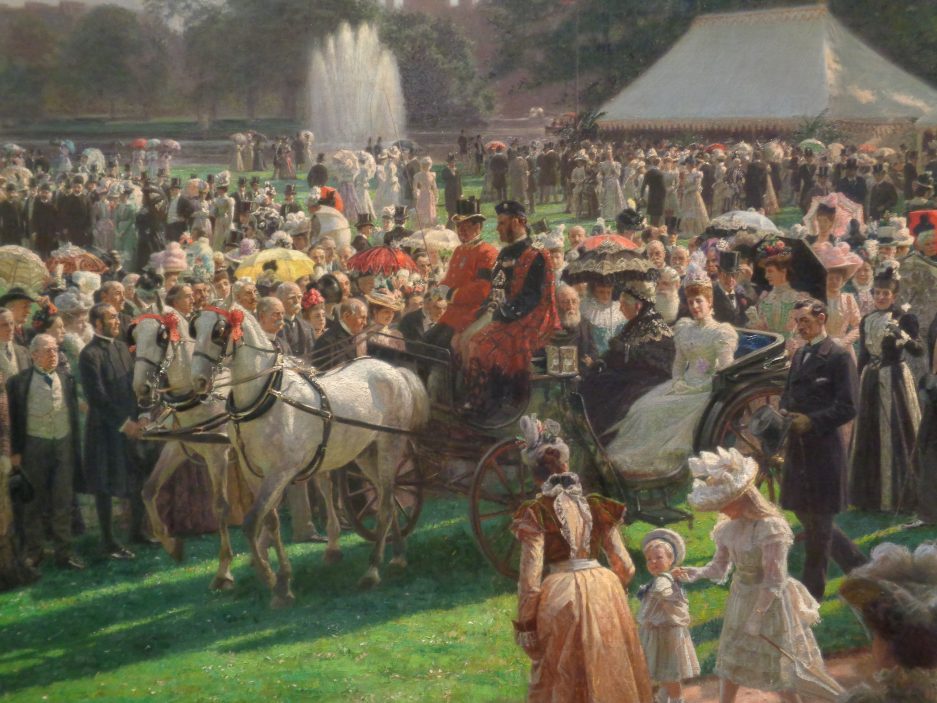Gabrielle “Coco” Chanel is arguably one of the most influential fashion designers of the 20th century. Her designs have shaped women’s wardrobe for over a century and her perfume Chanel No 5 remains as fresh and as iconic as when it was first launched in 1921. Even if most women have never had a Chanel dress, bag or jewellery, chances are she would have something in her wardrobe that bears an indirect imprimatur of the woman herself, perhaps a little black dress, a quilted shoulder bag or a string of fake pearls.
The V&A’s current exhibition Gabrielle Chanel: Fashion Manifesto is the first major retrospective of Chanel here in the UK and chronicles Chanel’s career from her first shop in 1916 to her death in 1971. Chanel’s designs have always been characterised by comfort, simplicity, and ease of movement and she would time and again return to these three key points throughout her career.
Chanel’s background informed a lot of her work from the years spent in an orphanage under the care and education of nuns to being the mistress of wealthy men such as Boy Capel who crucially provided the funds for her to start her business and the Duke of Westminster whose interests in outdoor pursuits such as hunting, shooting and fishing influenced her use of “lowly” fabrics such as tweed and jersey in her designs.
The exhibition is set chronologically from Chanel’s beginnings as a milliner, to her successes in the 1920s and 30s, the war years then her comeback in the 1950s when she was up against the new guard as personified by the likes of Christian Dior. She also branched out into jewellery both fine and costume, working with established designers who helped turned her aesthetics into reality. The displays also showed that Chanel was a savvy businesswoman, the launch of her perfume Chanel No 5 led to the birth of a fragrance icon and ensured that she reached as wide a customer base as possible by expanding the No 5 range to include cologne, soaps & lotions then later branching out into skin care and cosmetics. Like other designers, she also extended her reach via licensing, for example the suit worn by Jacqueline Kennedy on that fateful day in Dallas, Texas in 1963 was designed by Chanel in Paris but made in the United States by a licensed company and reproduction of patterns in magazines for dressmakers.




The exhibition has all the class and style for which Chanel was famous. The displays are well laid out and even when the exhibition was busy, we were still able to see the displays properly. The cabinets enabled us to see the clothes both in the front and back and the flow allowed you to appreciate Chanel’s artistry without being overwhelmed. The interpretation stuck to the main thrust of the exhibition and crucially did not shy away from Chanel’s controversial behaviour during World War 2; was she collaborator or resistante? (Chanel with her constant re-writing of her history could have been either, or indeed both).
We also appreciated and liked the use of the Chanel font and colours which in our opinion enhanced the visitor experience. The recreation of the mirrored staircase at the end gave visitors the opportunity to feel that they were in the actual Chanel showroom in Paris.

What the V&A has given visitors is a parade of swooningly beautiful clothes that many women would give much to possess, even the early creations from the 1920s. What there is not is the crucial element in any garment: how does it look and move on the wearer? There are few images of the clothes being worn or sense of how a woman would look or move in what are some truly spectacular gowns. Shown on etiolated stiff little mannequins they lack a little of what must have been the drama and dazzle and admiration of anyone who saw or indeed wore them; which is a shame, as the exhibition itself says about an evening dress from 1918, Motion was key to Chanel’s unique style. There’s also little sense of Chanel the woman, who was in many ways her own greatest creation. Chanel the designer of iconic clothes who was almost mystically in accord with how women wanted to dress, Chanel the business woman, Chanel the setter or trends who came back triumphantly from post-war obscurity: but not Chanel the woman, who was in many ways her own greatest creation.
This is the second time in four years that the V&A has staged a blockbuster retrospective of an iconic designer, the first being Christian Dior in 2019 and we were fortunate to have visited that as well. However, we preferred the Chanel exhibition not only due to the reasons stated above but also to keeping the focus on the woman herself and her legacy.
Gabrielle Chanel: Fashion Manifesto is on the V&A South Kensington until 10 March 2024. For more information, please visit: https://www.vam.ac.uk/exhibitions/gabrielle-chanel-fashion-manifesto
The bloggers visited the exhibition on 1 November 2023. Photos were taken by the bloggers.
